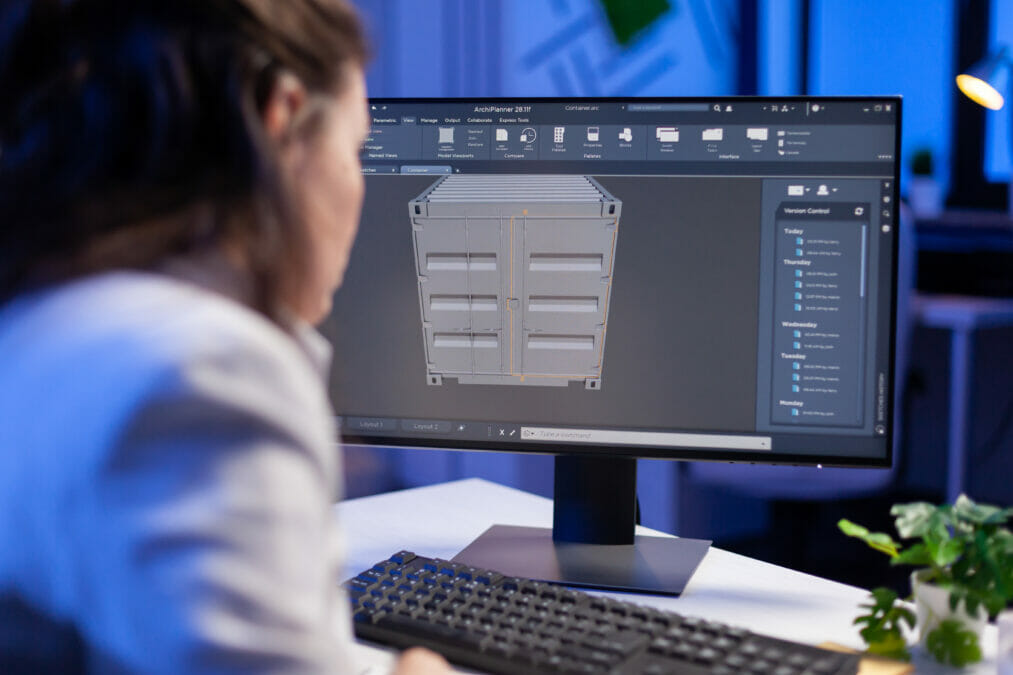In this article, we explore the rise of Kubernetes and containerisation, and how this trend can shape the tech industry
Technology can seem to run in cycles. Over the the past couple of decades of IT, most of the focus has been around taking disparate elements of an organisation’s infrastructure and bringing them together into something much simpler. But now, with greater focus on applications and containerisation, it can feel like we’re breaking them all up again.
However, it’s important to focus on the common thread that connects each big technology and infrastructure trend. The key thing in all this is that these changes have improved cross-functionality, communication, and collaboration across a business. So even if it feels a little like the latest trend is undoing something that’s already been done, in reality we’re moving forward and improving on what was there before.
A long history
Containers themselves aren’t actually that new, of course – they’ve been around since the 1970s in some shape or form. Back in 1979, during the development of Unix V7, the chroot system was introduced, which was effectively the first incidence of the process isolation that lies behind containers. Fast-forward to 2004 and the release of the first public beta of Solaris Containers was a big moment – this was effectively virtualisation before VMWare.
Over the next decade things became more accessible as the open-source community got hold of containers and began to apply standards. By the early 2010s, containerisation was ready to go mainstream and the launch of Docker in 2013 did the trick, helping the technology explode in popularity.
The success of containers at that time can be partly explained by VMWare’s rise over previous years. Virtualisation meant that organisations no longer had to run on a one-application-per-server basis, paying for inefficient data centres with thousands of servers all running an application each. VMWare allowed companies to virtualise these servers and run multiple applications on one bit of hardware – a true game-changer.
Bringing everything together like this, though, can cause fresh issues – namely that you’d end up wasting a lot of your servers’ capabilities. That’s where containers came in – when an app runs in a container, that container only has what it needs. And, of course, you can create multiple containers in one server. Today, VMWare Tanzu transforms the way organisations build, run and manage modern, cloud-native applications.
>See also: Everything you need to know about containers
Divide and conquer
Containers have proved vital for some of the essential tech functions modern businesses rely on. Let’s say your company has a shopping application, where customers can browse for clothes, make payments and manage their account. In the old days, the whole application would be in one monolithic contained module on your system, meaning that if you wanted to update one app function – such as payments, the catalogue or search – you’d have to take the whole thing down. But if, by using containers, you break down the application into modules for each function, everything can be scaled, updated or tweaked in isolation.
But with, say, five containers for one application, scaling can become a little tricky. Thankfully, Kubernetes can solve all this by managing containerised workloads and services. It’s essentially the heart and brain of scaling these kinds of things up. Projected to reach a market value of almost $6 billion by 2027, Kubernetes has been found by recent research to be growing in prominence across organisations by up to 25 per cent, with cloud developers citing scaling of work and ease of container management as top benefits gained by the technology.
Automated assistance
Kubernetes are powerful enablers of dev ops and agile ways of working. Containers that run applications need to be managed to ensure that there’s no downtime – if one goes down, then another container needs to step up to take its place. This is easier to manage when handled by an automated system, and Kubernetes provides a framework that takes care of failover and scaling for an application, as well as functions like deployment.
However, as we’ve seen with other technologies, Kubernetes aren’t the answer to everything. A 20-year-old CRM, for example, isn’t something that can just be moved overnight – it would cost a fortune. Businesses need to speak to outside voices that can help them understand what they can and can’t do.
When we went from physical to virtual, many companies virtualised everything and then realised they had to keep some elements physical. The same thing happened with cloud and it’s now happening with containers, too. There is also much complexity that remains a key obstacle towards achieving business goals – found to affect over half (54 per cent) of cloud developers.
We don’t have to see history repeat itself again. It’s about picking the right technology for the right situation and business need, and organisations that stay focused on improving cross-functionality, communication, and collaboration will be less likely to find themselves unpicking expensive mistakes and facing more complexity down the line.
Ashminder Ubhi is enterprise sales manager at CDW. This article was written as part of a paid content campaign with CDW.
Related:
How enterprises can get better with Kubernetes — How mature is your business when it comes to adopting Kubernetes? Steve Judd at Jetstack offers a guide for CTOs of enterprises adopting Kubernetes for software deployment, scaling and management.
UK-based Kubernetes jobs to apply for this week — Kubernetes has become the key platform for moving workloads onto the cloud. Here are three Kubernetes jobs that you should know about.







